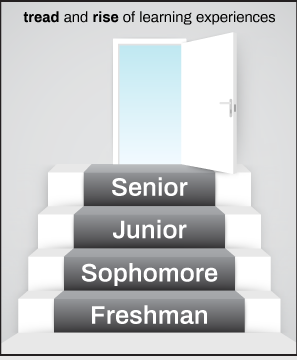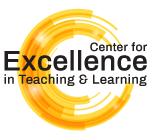| |
CETL | Canvas | AI Guide | Course Design | Online | Software | Workshops
 Curriculum Mapping Curriculum Mapping
Curriculum Mapping is a method that aligns teaching and learning experiences and goals at the course and curriculum level. It helps departments define and refine a logically organized/scaffolded series of learning experiences that facilitates and links student progress from the freshman to senior year. It also sheds light onto what is taught, when, why, and how in a way that makes sense to the faculty, the students, and the university. In short, it creates a coherent program. But it's sometimes tough because it requires members of a department to critically assess itself along those italicized dimensions. In a positive light, after the first iteration, it brings faculty together to reflect and refine.
Why Map Your Curriculum?
A Logically Mapped Curriculum
- Documents what is taught and when—in the curriculum and in a multi-year calendar. (Consider the value to students and faculty)
- Identifies the core competencies and skills the define the major and the reason for the sequencing of classes
- Reveals gaps (and other potential problems) in the curriculum—on the tread and in the rise. (Just as the rise connects one step to another, the curriculum links stages of learning—content and skills—from the first step to the last, and with (when applicable) an integrated experience/towards a capstone)
- Links teaching, learning, outcomes, and assessments
 The Stair-Step Approach The Stair-Step Approach
A well-designed curriculum should make perfect stair-step sense: the content and skills required at the sophomore level should, for example, build off of what was learned at the freshman level and advance a student to the junior level. The critical questions for every course and step are:
- Why is this course and why are these skills required?
- Why are they required at this level?
- Is there any effort to conclude/include in each step (class) a concrete statement that links it to what came before and what comes next?
Curriculum Maps or Matrixes are tools that helps us view goals and expectations at each point in the curriculum. Specifically, they help us translate the stairway into a table/rubric. Most often (and easily), Maps and Matrixes are tables, where:
- Rows identify the courses
- Columns identify the program level learning outcomes
- Cell data identify what is required of the program learning outcomes in the individual class
Exercise
Draw a table and fill in the blanks with pertinent row and column information. Don't specify course-specific Student Learning Outcomes (SLOs); focus instead on the program-level SLOs. Now come up with a key that identifies what should be learned/demonstrated at each stage of the curriculum, meaning, in each class. One prevalent strategy is to identify the core competencies/skills that define the major, and then think about whether that core competency/skill is expected to be introduced, reinforced, or mastered, and then indicate if you have evidence that you can generate to show that it has been introduced, reinforced, or mastered.
As a departmental exercise, it could be very interesting and useful to see how different faculty members express the program level learning outcomes. The key is not to have anyone singularly define them, but to discuss and even debate them, with the intention of arriving at a consensus.
| Course |
SLO1 |
SLO2 |
SLO3 |
SLO4 |
| 100 |
|
|
|
|
| 200 |
|
|
|
|
| 300 |
|
|
|
|
| 400 |
|
|
|
|
Examples and templates*
Undergraduate Curriculum
Key: "I"=Introduced; "R"=reinforced and opportunity to practice; "M"=mastery at the senior or exit level; "A"=assessment evidence collected.
| Courses |
Intended Student Learning Outcomes |
| Apply the scientific method |
Develop laboratory techniques |
Diagram and explain major cellular processes |
Awareness of careers and job opportunities in biological sciences |
| BIOL 101 |
I |
I |
|
I |
| BIOL 202 |
R |
R |
I |
|
| BIOL 303 |
R |
M, A |
R |
|
| BIOL 404 |
M, A |
|
M, A |
R |
| Other: Exit Interview |
|
|
|
A |
Graduate Curriculum
| PhD Requirements |
SLO1 |
SLO2 |
SLO3 |
SLO4 |
| Course Requirements |
X |
|
|
|
| Qualifying Exam |
|
X |
X |
|
| Comprehensive Exam |
X |
X |
|
X |
| Dissertation |
X |
X |
X |
|
| Final Examination |
X |
X |
X |
|
| Seminar Requirements |
|
X |
|
X |
* Based on the University of Hawaii-Manoa and RIT.
|



 Curriculum Mapping
Curriculum Mapping The Stair-Step Approach
The Stair-Step Approach